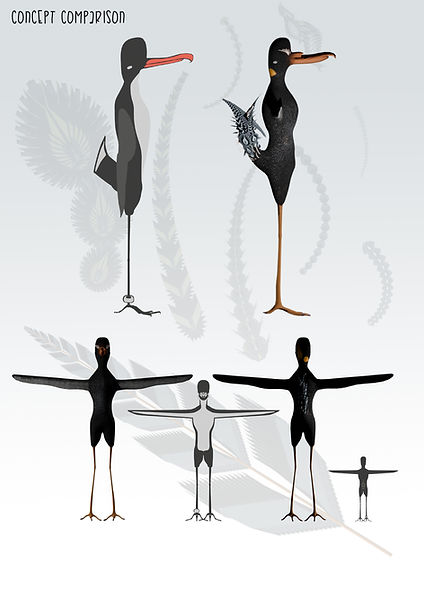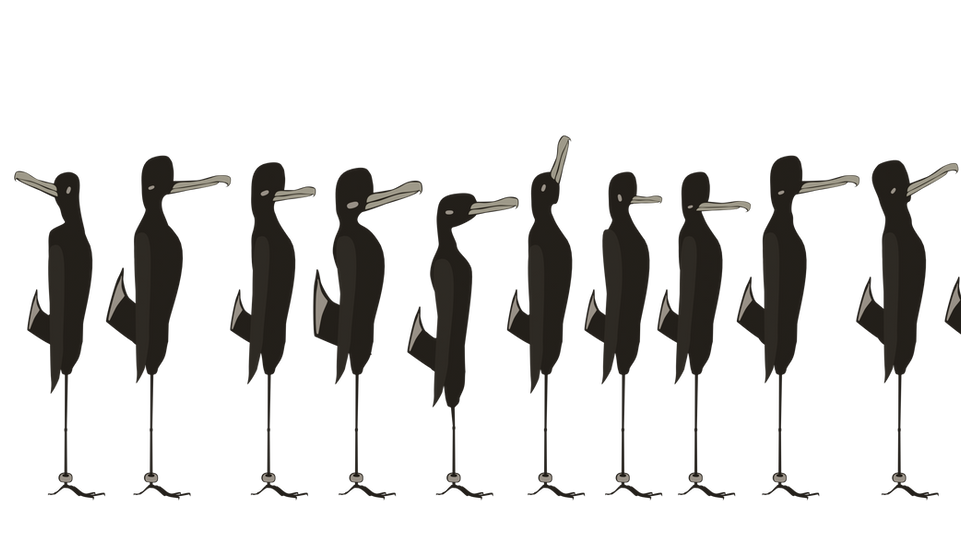

"The fading green of your magic
emanations shall not make pure again
these polluted skies . . . for this
is no ordinary sun." - Hone Tuwhare, 1964

Game Design Prototype by Peregrin Hyde
Unreal Engine 5.6

Click here to download and play the game for free! (1.3GB)

No Ordinary Sun's title is a homage to a work of the same name, written by the late poet Hone Tuwhare (Ngāpuhi. 1922-2008). Tuwhare spent time deployed in Japan in the aftermath of World War II and witnessed first-hand the ruin of nuclear devastation. His renowned poem, No Ordinary Sun, is a rich and evocative lament regarding nuclear annihilation, resistance and futility. These are among the themes explored in this game prototype. Nei rā te mihi ki a koe e Hone, i ōu kupu whakamanawa.
No Ordinary Sun is a movement-based puzzle game prototype set in a bleak, dystopian world in crisis. The player - somewhere between a penguin, an albatross and a human, begins in a dark and noisy underground chamber, holding a strange glowing red orb. Thousands of their kind look down upon them before they are sent on their way to an overworld devoid of characters. The environment is a rugged, barren volcanic slope covered in sand and clad in brutalist concrete structures. Heading downhill, the player enters an empty city blaring with sirens - something ominous is afoot. A gate blocks their progress. The player must move about the level at pace using snowboard-esque mechanics and a unique teleportation method to open the gate and proceed to the great wall where they will undertake a most woeful deed. This project was developed and completed for VUWs GAME202 course between July and October 2025, and has been an exercise in rapid-prototyping, asset pipelines, and level design using Unreal Engine 5.6.


Character
The profiles of the character were created using two-dimensional curves in Blender. This proved to be a fruitful workflow, as these profiles could later be rapidly iterated in new poses, duplicated and modified to create many of the decal frescos found throughout the game world
The 3D character was modeled in Blender. Adobe Substance Painter was used to finalise the texturing. The tail was created from a mirrored radial array of feather cards. The texture applied to these cards is also a render of a collection of mirrored and arrayed 2D Blender objects. This was done by using a screen shot of the tail UVs as a guide, and fitting the 2D blender objects to them in orthographic view. When applied as a texture to the feather cards, they have created a compelling recursive pattern.







Level & Movement
Creating a large world posed a challenge - the player would need to get around it painlessly. To address this, I decided that this penguin-esque game character would belly slide. This was achieved with a roll-ball physics object that controls the character position when sliding is active, and though an almost unserious exploration at first, this mechanic was too fun to drop. With a basic roll-ball guided movement system in place. I began designing the level - it would function as a ski slope, with fast downhill motion and limited uphill movement. Pinching the valleys would guide players into the abandoned city, even if they initially weren't sure where to go. This presented a new problem however - players would become stuck once they'd followed the slopes all the way down. To remedy this, I implemented a teleport mechanic, by which the player could use the "device" to teleport to the bunker entrance at the top once more. This would open up the level for multiple "runs" allowing the player to explore other routes and areas, and I could begin scattering collectibles (in the form of statue keys) to progress the game. With movement now driving aspects of the gameplay. I created some assets with slope and ramp shapes to encourage players to approach the world like a snowboarding game. Much later in development, additional actions were implemented, including a flip, a wall run, a concrete hop, boosting from disintegrating plants, and the ability to place more teleport "tethers".

Assets
Flora
The flora assets were created in Blender using a geometry node system. This system takes a user curve as an input, resamples and peturbs it, creates a tapered mesh cylinder and spawns branches from random faces. These in turn spawn "crown", "flower" and "leaf objects at their end points. This system allows for quick iterative designs of flora assets, with user-input sliders for parameters such as trunk thickness, part size, peturbation and more.
In game, the vegetation are instanced as blueprints which catch fire and disintegrate when the player approaches it. In addition to being hand-placed, these actors are instanced in the world using Unreal's Procedural (PCG) framework.
Architecture
Building assets were also created in Blender. A simple base mesh would be made taking notes from several brutalist architectural works here in Aotearoa (notably the Michael Fowler Centre and the National Library of New Zealand). I applied a Geometry Nodes modifier to some of these which created subinstances of the base mesh recursively upon itself. Some of these resulted in very intriguing interior and exterior spaces, and Unreal Engine's modelling tool and breadcrumbing was used to pave sensible accessways where needed. In engine, kitbashing was used extensively to rapidly create the sense of (often the illusion of) being in a dense, chunky brutalist city bound at one end by a great wall.

WIP/Greybox Level screenshots:



Character sliding with roll ball visualised



GALLERY













